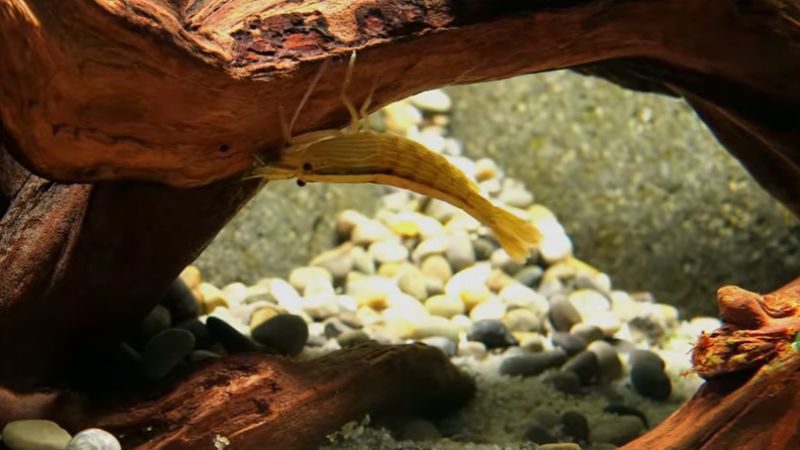Popular freshwater shrimp species like bamboo shrimp, commonly referred to as wood shrimp, can provide something unique to an aquarium. The distinctive look of these shrimp as well as their capacity to filter water while feeding, make them well-known. There are a few things you should be aware of if you plan to add bamboo shrimp to your aquarium in order to make sure they thrive there. This article will provide you with a thorough introduction to bamboo shrimp, covering everything from their habitat and diet to their behavior and reproduction.
What Is Bamboo Shrimp?
Atyopsis moluccensis is the name given to bamboo shrimp by scientists. They belong to the Atyidae family of crustaceans. Southeast Asia is the home of bamboo shrimp are native belong. Both the Indian subcontinent and islands like Sri Lanka and the Samoan Islands have substantial populations. Bamboo Shrimp are a typical sight in freshwater aquariums molt, particularly now that invertebrate keeping is more widely accepted.
You can come across this species listed under a few different names when looking for it. They include wood shrimp, fan shrimp, flower shrimp, Singapore flower shrimp, Singapore shrimp, and Singapore wood shrimp, in addition to Asian filter-feeding shrimp. Since they are frequently bred due to their popularity, you should be able to find them in a pet store close to you. If you can’t locate any, search online for retailers that carry them.
Depending on their size, their price can change. Shrimp that are smaller often cost between $3 and $6.
What To Feed Bamboo Shrimp?
Filter feeders, or bamboo shrimp, simply separate their food from the surrounding water. Here is where many aquarists become perplexed. Their optimal food consists of microscopic organic particles and floating aquatic creatures, such as microalgae or plant matter.
Due to this, you will play a much more passive part in the feeding process. You might not even need to feed your plants if you have enough of them and a strong enough current in your tank.
Why is bamboo shrimp not eating?
There are many reasons why bamboo shrimp might not eat, including stress, disease, poor water quality, and a lack of acceptable food. They are filter feeders. Therefore, they depend on the water’s steady flow to carry food particles to their fan-like appendages. They might not catch enough food if the water flow is too feeble.
Similarly to this, there might not be enough food for them to eat if the water is too polluted or lacking in organic materials. It is also crucial to keep in mind that bamboo shrimp may not feed immediately away after being placed in a new aquarium as they get used to it. A bamboo shrimp’s prolonged fasting could be an indication of stress or disease.
Do bamboo shrimp eat hair algae?
Bamboo shrimp indeed devour hair algae. In fact, aquarium owners frequently seek them out as a natural means of regulating the growth of hair algae in the tank. To guarantee a balanced diet, bamboo shrimp will also require other types of food, which is vital to keep in mind.
Bamboo Shrimp Lifespan
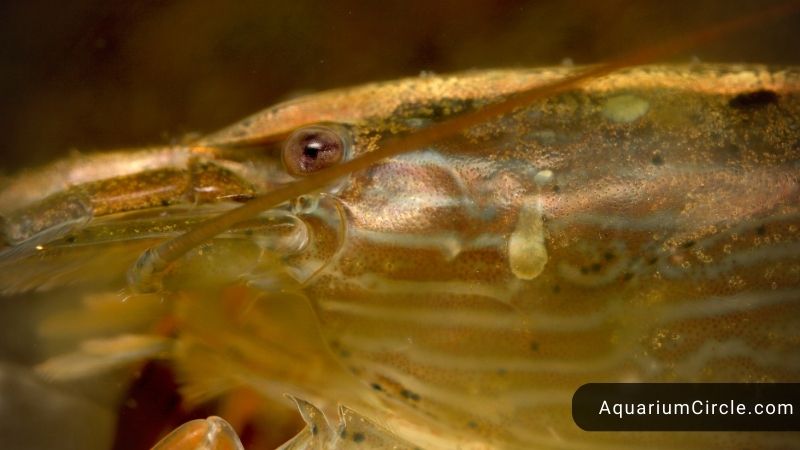
The typical lifespan of a bamboo shrimp, sometimes referred to as a wood shrimp or flower shrimp, is one or two years. This range is not out of the usual because shrimp often have short lifespans. Yet, they can live for up to 4-5 years with the right care.
Why do bamboo shrimp die?
Several factors, including poor water quality, a lack of oxygen, improper water parameters, a lack of food, illnesses, and advanced age, can cause bamboo shrimp to perish. For them to grow, it is crucial to keep the aquarium atmosphere hygienic and clean. Their needs should be addressed by water factors like pH, temperature, and hardness. Their life also depends on giving them access to enough food and air.
The Suitable Tank Size For Bamboo Shrimp?
Although some owners frequently keep them in tanks smaller than this, we don’t advise it. This species is a little larger than others and requires a little additional room in order to find food, which is the main reason we advise a somewhat larger tank. A larger tank is rarely a bad thing for the majority of aquatic life! Around 20 gallons are the recommended tank size for bamboo shrimp (for each individual shrimp).
And finally, a long tank is preferable to a deep one, an important tank condition. This design is more effective in facilitating a current that is crucial for feeding (more on that later).
Can bamboo shrimp live in a 10-gallon tank?
Sure, bamboo shrimp can live in a 10-gallon tank, but in order to give them the best possible living environment, it’s crucial to keep the tank clean and maintained. Also, if you intend to keep more than one bamboo shrimp, it’s advised to keep them in a larger tank, as a 10-gallon tank might not have enough room for them to live peacefully.
Can bamboo shrimp live in a 20-gallon tank?
You can keep bamboo shrimp in a 20-gallon aquarium, yes. As I previously stated, a 20-gallon tank is a better choice for them because it gives them more room to move about and find food. Also, more bamboo shrimp can fit in a bigger tank, which can enhance the species’ gregarious behavior. To support the health and well-being of the bamboo shrimp, it is crucial to set up the tank correctly with a sufficient filtration system and suitable water conditions.
Water Parameters Of Bamboo Shrimp
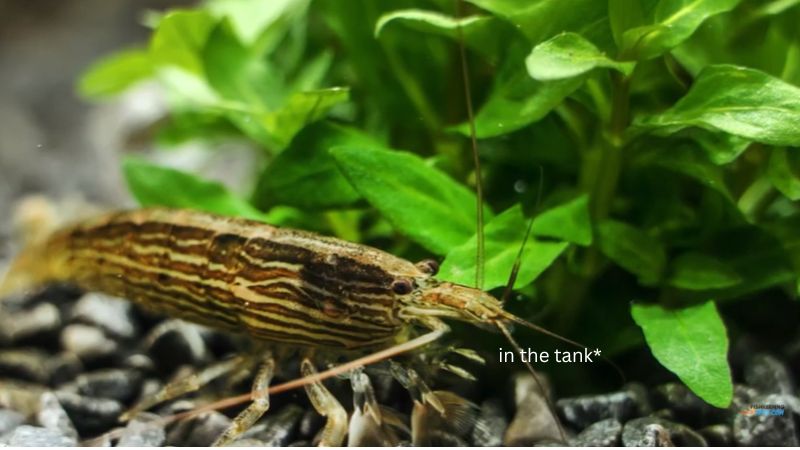
It’s crucial to comprehend the appropriate water conditions for bamboo shrimp. Even though they are quite resilient and low-maintenance, quickly shifting or unfavorable conditions might lead to major issues.
Hence, consistency is just as crucial as choosing the appropriate parameters. The ranges you should aim for are in the table below.
| Water temperature | 70°F to 78°F |
| pH levels | 6.5 to 8 |
| Water hardness | 3 to 10 dKH |
You should regularly check these parameters in order to keep this uniformity. This is essential early on while they might still be getting used to the altered tank environment.
How Do Bamboo Shrimp Breed?
We advise against trying to breed bamboo shrimp at all (don’t like Amano Shrimp or Cherry Shrimp) due to the extraordinarily high failure rate. If a knowledgeable breeder discovers a way to do it, we’ll be sure to include their suggestions in this manual. Here’s what you need to know if you’re set on breeding them.
The ideal ratio is one man for every woman. Fortunately, as we just discussed, they are simple to have sex. Up to 2000 orange eggs may be carried by a female for 30 to 40 days on her abdomen. These will eventually become brown and subsequently hatch into tiny floating larvae. These larvae need to be transferred to brackish water, which is a new tank. Around 1.024 should be the salinity level. If you leave them in fresh water for 2-3 days, they will probably perish.
To prevent the microscopic larvae from being ingested by the water, use a suitable sponge filter. The larvae’s nutrition selection can be challenging. Green seawater has reportedly been found to be effective in small quantities. The larvae will have transformed after 90 days, at which point they will only be able to swim forward. Next, you can reintroduce them to your primary aquarium, but be sure to lower the salinity to acclimate them to freshwater first gradually.
Do bamboo shrimp eat their babies?
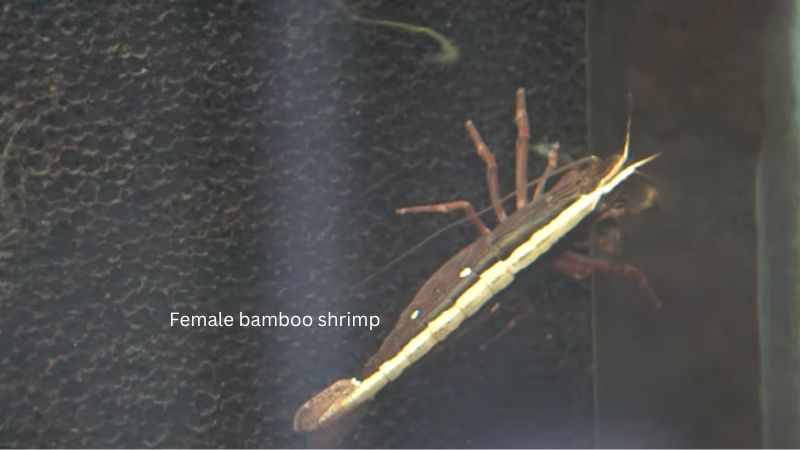
Since bamboo shrimp are not mammals, they cannot have live offspring. Instead, they lay eggs that develop into filter-feeding larvae that, if left unprotected, could be eaten by other tank dwellers. The bamboo shrimp, however, do not consume their own larvae.
Can Bamboo Shrimp Live Alone?
Although bamboo shrimp can survive alone, they thrive in groups of three or more since they are sociable animals. Bamboo shrimp will compete with one another for food, and the presence of other shrimp will motivate them to consume more food and become more active.
A more natural environment can be created for bamboo shrimp by having multiple individuals, which can enhance their general health and well-being. Nonetheless, it’s crucial to make sure the tank is big enough to hold whatever many bamboo shrimp you intend to maintain, as overcrowding can result in stress and health problems.
They are excellent additions to a tranquil community aquarium in captivity because they are accustomed to coexisting with a variety of fish and other invertebrates in the wild. Choose small- to medium-sized fish species only. Tetra, Danio, and guppies are shoaling species that make smart choices.
Do bamboo shrimp live with betta fish?
Yes. Betta fish and bamboo shrimp can coexist, but it’s crucial to make sure the betta is not hostile toward the shrimp. The tank should also be big enough to hold both species, with lots of places for the shrimp to hide and areas with low water flow. Making sure that both species’ needs for temperature and water quality are met is also crucial.
Can bamboo shrimp live with guppies?
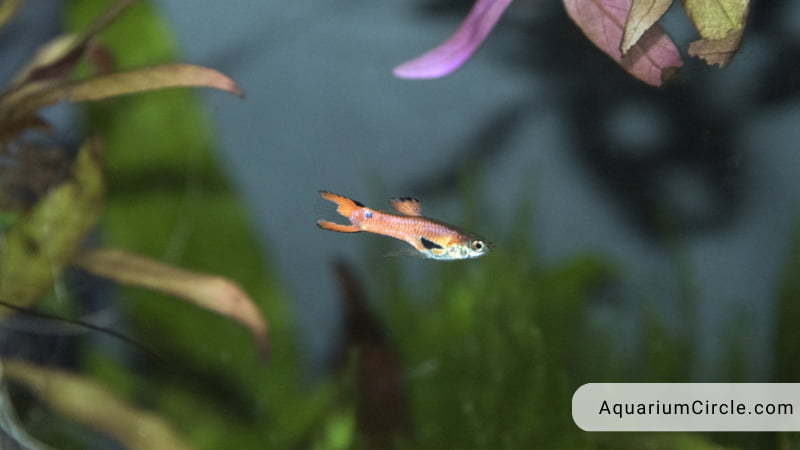
Yes. Guppies and bamboo shrimp can coexist as long as their needs are supplied, and the tank is large enough to hold both species. Guppies are calm and usually won’t bother the shrimp, but it’s crucial to watch out for them biting at the shrimp’s delicate appendages that filter-feed. Moreover, when kept with guppies, bamboo shrimp should have access to strong water flow and good-quality water conditions.
How many bamboo shrimp can be kept together?
The calm nature of bamboo shrimp and their lack of hostility toward their tank mates are well-recognized. It is crucial to remember that they are filter feeders and need a lot of food and space to survive. Usually speaking, it is advised to keep one bamboo shrimp every 10 gallons of tank water. The stress and competition for food that might result from overcrowding could be detrimental to their health. Before adding bamboo shrimp to a tank, it is crucial to take into account the size of the aquarium and the availability of food.
FAQs
Why do bamboo shrimp change colors?
One typical explanation is that they are reacting to water changes in their surroundings or changes in lighting. Another explanation would be that they are molting, a natural process when the shrimp grows a new exoskeleton while shedding its old one. The shrimp’s colors may appear dull or faded throughout the molting process until the new exoskeleton solidifies and restores its brilliant appearance. Certain bamboo shrimp can also communicate by changing their color, for example, by signaling hostility or submission to other shrimp in the tank.
Do bamboo shrimp escape?
Although bamboo shrimp are not known to be escape artists, they still need a tight-fitting aquarium lid or cover to stop them from unintentionally climbing out of the water or unexpectedly dropping out of the tank. Also, it’s crucial to watch out for an excessively strong water movement, which can stress shrimp and encourage them to flee.
Are bamboo shrimp good cleaners?
Yes, bamboo shrimp are considered good cleaners as they filter-feed on debris, waste, and uneaten food in the aquarium water. They also consume algae, making them helpful in maintaining the overall cleanliness and health of the aquarium. However, it’s important to provide them with a proper diet and adequate space in the tank to ensure they can effectively perform their cleaning role.
References:
- Wikipedia – https://en.wikipedia.org/wiki/Atyopsis
- Wood Shrimp – https://www.theaquariumwiki.com/wiki/Atyopsis_moluccensis

Annette M. Chaney is an experienced marine biologist with over 20 years of experience as an aquarist and fishkeeper. She started her first aquarium at a young age, filling it with frogs and goldfish obtained from the ten-cent pet store.
Annette grew up caring for and breeding African Cichlids, which led to a hobby in high school that doubled as a profitable means. Attending Reed College gave her time to solidify herself as an accomplished aquarium caretaker with an eye for sales. After that, from 2009 – 2013, she studied at Roger Williams University – one of the most prestigious universities for Aquaculture and Aquarium in USA. She is the founder of AquariumCircle since 2010.
